- Home
- Adam Croft
Jack Be Nimble (Knight & Culverhouse Book 3) Page 12
Jack Be Nimble (Knight & Culverhouse Book 3) Read online
Page 12
Frank Vine nodded and jotted a note down on his pad. It’d be a big task, but Frank would be far happier doing this than being on the door-to-door team or marching around the town trying to ‘raise awareness’.
‘I think it likely that he perhaps considers one of the original suspects to have been wrongly accused,’ the profiler continued. ‘It’s likely that our man has some sort of personality disorder. This, combined with the realisation of some — perhaps tenuous — link between him and one of the suspects could flick a switch. Importantly, he seems to be treating it all as some sort of game. A very carefully planned game. We’re looking for someone with the real mind of a serial killer, not just someone who’s mentally unstable and wants to kill. Another avenue worth looking at is the possibility that it’s someone who thinks he’s worked out who committed the original Ripper killings and is so convinced of it that he’s recreating them in the hope of “proving” someone’s guilt in the original killings.’
‘Guv, there are hundreds of websites online about the Ripper killings,’ Debbie Weston said. ‘All sorts of web forums and Facebook groups where people put forward their own theories and try to “prove” that certain people could or could not have done it. It might be worth looking there for starters, but it’d be impossible to narrow it down any further. The whole subject of Ripperology is massive online.’
‘Ripperology?’ Culverhouse asked. ‘Christ. When I was a lad, scientists used to study cancer and environmental change.’
‘It’s a big subject,’ Debbie replied. ‘People dedicate their lives to trying to prove things one way or the other when it comes to the Ripper. It’s a huge money business if you can make a breakthrough. There are so many books and websites on it, it’s incredible. Every time someone writes a book claiming to have proved something one way or the other, they make a mint.’
‘Looks like I’m in the wrong job,’ Culverhouse said. ‘All I get’s a pat on the back and a chocolate biscuit from the Chief Constable.’
The assembled officers allowed themselves a small laugh, which helped to break the tension.
‘That’s a fair bit for us to be going on,’ Culverhouse said. ‘Thanks, Patrick.’
‘No problem. I know you’re not going to like me saying this, Jack,’ Patrick Sharp summarised, ‘but I think you’re going to have quite a job on your hands.’
41
1st October
After Patrick Sharp had left, Culverhouse declared that he thought it would be a good idea to generate a list of potential suspects based on the suspects in the original Ripper case. If the modern day Ripper was somehow emulating the murders in order to avenge a Victorian suspect or prove somebody’s guilt, this seemed a particularly good place to start.
Debbie Weston had by now become the de facto incident room expert on the original Ripper killings, and it was Debbie who addressed the room with regards to the original Ripper suspects.
‘The strange thing about the original case is that there still isn’t an overwhelming favourite in terms of suspects. There are three or four who are considered most likely, but they all have their drawbacks. One of the prime suspects was a man called Montague John Druitt, who was a barrister and assistant schoolmaster. The only real reason he was linked to the killings was because he killed himself on New Year’s Eve in 1888. There are rumours that he was gay, which led to him being sacked as assistant schoolmaster and killing himself. There are also suggestions of mental illness in the family. He had pretty strong alibis for a couple of the killings, so these days he’s considered unlikely. His name is still synonymous with the Ripper killings, though, so it might well be that someone wanted to clear his name for once and for all.’
‘I still don’t see how killing four women somehow clears the name of a bloke from the Victorian era of five totally separate murders,’ Culverhouse said.
‘All psychological, guv,’ Frank Vine offered.
‘Helpful, Frank, thanks.’
Debbie Weston continued. ‘A polish man called Seweryn Klosowski, who later changed his name to George Chapman. He came to the UK just before the murders started, and was hanged in 1903 for poisoning three of his wives. And get this — he worked as a barber.’
‘Sounds promising,’ Culverhouse said.
‘The police at the time dismissed him because of the different MO. His wives were poisoned using a compound called tartar-emetic. But there does seem to be a Polish link. The suspicion of an unnamed Polish man appears quite a bit in police reports at the time. That leads me on to another Polish guy, a Jewish man called Aaron Kosminski. Interestingly, there was a book out a short while back which named Kosminski categorically as being the killer. Using DNA evidence, apparently. He worked as a hairdresser and was admitted into an asylum in 1891. An interesting little nugget is that some people believe he was confused with another Polish Jew of a similar age, probably Aaron Cohen, who was in the same asylum but was reported to have heavily violent tendencies, whereas Kosminski apparently was far more gentle.’
‘Another hairdresser,’ Wendy remarked. ‘Someone who’d be in a position to know all about people’s lives and goings on.’
‘And pretty handy with a sharp implement, too,’ Culverhouse added. ‘What’s to say our girls’ throats weren’t cut with a razor blade?’
‘We won’t know until the Janet Grey files her final report,’ Wendy replied. ‘Off the record, she reckons it’s possible but she can’t say for certain what was used yet.’
‘They’re usually considered to be the main three suspects,’ Debbie continued. ‘The other one which pops up quite a lot is Francis Tumblety, who was a quack doctor from America who escaped prison after a patient died following his treatment and came to England. It’s said he despised women and particularly hated prostitutes. Rumour has it that he was married to a prostitute and it didn’t work out.’
‘Surprise surprise,’ Culverhouse murmured.
‘Oddly, he was arrested in 1865 for being somehow involved in the assassination of Abraham Lincoln. He fled the country within days of the fifth murder — some think perhaps even before it occurred — but these days people generally have discounted him as a suspect. He didn’t match any of the eyewitness accounts and he was noted as being very tall and with an enormous moustache, which would’ve made him stand out, to say the least.’
‘Quite possible that a modern day doctor might be trying to exonerate him, though?’ Culverhouse asked.
‘It’s possible. Worth looking into, I’d say,’ Debbie replied, beaming inside at the responsibility she was being given in this case. ‘There were literally hundreds of suspects named, but other ones worth looking into would be Michael Ostrog, a Russian con man; John Pizer, a Polish Jew with a record of assaulting prostitutes; and James Sadler, a suspect in a later murder who was known to enjoy the company of prostitutes. It’s worth noting that all three had solid alibis for the dates of the murders. Two of them weren’t even in the country.’
‘Plenty to be getting on with there, then,’ Culverhouse said. ‘Once we’ve got their family trees traced, we’ll be able to see if there are any descendants living locally or working in professions of interest. We’ll also need to draw up a list of potential persons of interest based on the suspects Debbie just gave. Modern day equivalents, if you like. Then I think it’s time we had a word with a few of them.’
42
1st October
Suzanne Corrigan could feel her heart in her mouth as she held the envelope in front of her. She’d recognised the handwriting straight away. It was the same type of envelope as before — cream, half-A5, mottled and with the stamp perfectly aligned with the corners. Just seeing her name written in his handwriting was enough to send a chill down her spine.
Her first instinct was to put it down and go and tell her editor, but she knew she couldn’t do that. The police had asked her not to. They needed to keep this under wraps for now, they said. At the same time, the envelope stuck to her hand like an industrial magnet, begging
her to open it.
She knew she shouldn’t. She knew she should take it straight to the police, but she also knew that if she did that she’d never know what was inside. After all, the letter was addressed to her. The contents were something the killer wanted her to see.
After a few seconds, her curiosity got the better of her and she slipped the end of her letter opener under the flap and gently tapped at the edge of the envelope. Once it was open, she poked the letter opener back in and used it to pull out the letter, taking care to check that there was nothing else in the envelope too. She was wary of leaving fingerprints, even though the police had told her the last letter didn’t have any prints — other than hers — or anything they could use to identify the writer.
She opened the letter with her fingernail and held the bottom half down with the letter opener. That same handwriting. She’d been surprised that the police had scoffed when she suggested a handwriting profiler should look at the first letter. No longer seen as credible expert witness evidence, apparently.
She took a deep breath and began to read.
Dear Suzanne,
I can only presume you received my last letter. Forgive me for breaking with tradition but it seems those idiots need my help. So much for groundbreaking policing.
The third one was easy. They had no chance with that one. Too predictable in their movements. The fourth was a little spicier. That phone call made sure it was far less boring than otherwise. Gave me a bit of a run for my money. Shame I had to do it all myself though. Think they’d make an effort wouldn’t you?
In case you haven’t guessed by now I really like a chase. It’s no fun when the police are clueless. Maybe you might ask them to consider a couple of things. It’s amazing what you can do in plain sight. I thought my disguise was good but maybe I didn’t need it after all.
I’ll say no more. I’m sure you will hear from me again soon, Suzanne. Especially if the local police force continue to be as inept as they’ve already shown themselves to be.
Jack
43
2nd October
Patrick Sharp had only been given a very short amount of time to go through the letter, but in his mind that was all he needed.
‘I’d say it’s almost certainly from our man,’ he said to Culverhouse. ‘Yes, the style’s very different but there’s good reason for that. In the first letter he was emulating — almost copying — the original Dear Boss letter. In this one, he’s writing as himself. Plus there’s the fact that the handwriting’s almost identical, not to mention the fact that he talks about the other two murders and the phone call — detail that wasn’t released to the public.’
‘So why the change of style?’ Culverhouse asked.
‘Could be many reasons, really, but the one I’d be cautious of is the possibility that he’s had to change tack somehow. Things perhaps aren’t going quite to plan for him, so he’s having to change things from what he’d intended.’
‘Diddums,’ Culverhouse replied sarcastically.
‘I wouldn’t be quite so dismissive. If he’s changing his plans, that could be disastrous for us. As things are, we know the date of his next murder plus we have an idea as to what sort of person his victim might be, as well as a shortlist of locations. It might sound vague, but it’s more than most police forces have before a murder takes place. If he’s being panicked somehow into changing his plan, we wouldn’t have any of that. He could kill sooner, or later, and perhaps even a totally different victim.’
‘Or not at all?’
‘It’s possible. I’d hope for your sake you’re right.’
‘Is it worth getting a handwriting analysis?’ Wendy asked, jumping in.
Patrick Sharp chuckled. ‘In a word, no. Especially not if you’re talking about the kind of analysis where someone reckons they can tell a person’s personality based on their handwriting. I’m afraid that’s a load of old pony. You’d be better off seeing a medium.’
‘It wouldn’t be an option even if it wasn’t a load of bollocks,’ Culverhouse said. ‘Our esteemed PCC wouldn’t give us the budget anyway.’
‘Even if it means the difference between catching our Ripper and not?’ Wendy asked.
‘Firstly, it doesn’t. It means bugger all and would probably do more harm than good by leading us up the garden path. And secondly, you seem to be forgetting that we’re expected to get world class results on a shoestring.’
Wendy had nothing to say in response to that. ‘Aren’t you a bit worried about the writer’s breaking with tradition, though?’ she asked Patrick Sharp.
‘Not especially, no. Not in the sense that I’d doubt the veracity of the letter, anyway. It worries me that it might possibly signal a shift in his perception or MO, but that’s purely speculation at the moment.’
‘Do you think he might try stepping up his game?’
‘It’s possible. Above all, I’m pretty sure he’ll stick to his MO. This has been far too carefully planned and orchestrated for him to throw that away right now. I’m fairly confident he’ll stick to things like dates and times. He’ll want to emulate the original Ripper killings. That’s his whole raison d’etre. What he might do, though, is increase the stakes. He’s already done it once by making that phone call in between the third and fourth murders, basically to tell you where he was. He’s thriving on the chase and the increased tension.’
‘So what, he wants to be caught?’ Culverhouse asked.
‘Not necessarily. He wants you to come close, certainly. I think the easiest way to describe it is that this is like a game to him. Imagine you’re playing a computer game and you’re winning easily and convincingly. For a bit more of a challenge, you might increase the difficulty level. Make it more fun. That’s what our man is doing here.’
‘You think there’s a link with video games?’
‘I doubt it. It’s just the psychology behind it that’s the same. We see it quite a lot in serial killers. They have an immense sense of power, but they like to and even need to have that power challenged occasionally, if only so they can win the battle and further validate their sense of power.’
‘Oh, well I’m glad we could help him,’ Culverhouse replied, folding his arms.
‘As far as the content goes, I’d say he’s sounding pretty confident. He’s talking about the phone call making things far less boring. That all goes with his levelling-up the difficulty. A couple of things stand out. They’re not for me to comment on, but I wonder if he’s maybe thrown them in as little clues to up the ante even further. There’s this mention of being in plain sight, plus the disguise which he says he maybe didn’t need after all.’
‘What, like a physical disguise?’ Wendy asked.
‘Who knows? That’s not for me to say. There could be any number of meanings. The mention of being in plain sight is particularly intriguing, but at the same time could mean absolutely nothing. I mean, we already know that he’s been walking around in plain sight inasmuch as he’s been committing these crimes right under our noses. That might well be what he’s referring to. The disguise is far more cryptic, perhaps, but worth looking into.’
Culverhouse stood and walked away from the table, shaking his head. ‘No, I don’t think so,’ he said, rubbing his chin, the rough palm of his hand rasping against the stubble. ‘I’m not convinced. How do we know he’s not just trying to lead us down the wrong path? He’s already done that before, trying to second guess us and use it to his advantage. What’s to say he’s not doing that again?’
Patrick Sharp just smiled. ‘That, Jack, is what you’re going to have to find out.’
44
7th October
By now, the team had had the opportunity to look further into the lives of the four dead women in order to try and find out if there were any links between them. They’d also been looking into doctors and surgeons living in Mildenheath as well as building a list of people who’d potentially be in a position to find out a lot about the women’s lives.
They’d looked at the women’s lives in as much detail as they could, but it seemed that there was little or no crossover. All except Emma Roche had Facebook profiles, and they’d cross-referenced the friends lists of the other three. They had only two mutual friends between them, which was quite remarkable considering the fact that they all lived in Mildenheath. One was a disabled woman living in a surrounding village who’d been housebound for three years and the other was a man who’d moved to New Zealand five years earlier for work.
‘I had a look at the medical records,’ Luke Baxter said, looking down to read off his notes. ‘Keira Quinn had been taking medication for depression, as had Lindsay Stott. Marla Collingwood had been going through CBT, a talking therapy, but had refused medication.’
‘Isn’t that quite high? Three out of four women being treated for depression?’ Wendy asked.
‘Depends how you look at it. Generally it’d be about one in four, but we’re looking at women who live on their own, generally divorced or separated, not working. I’d be pretty bloody depressed too.’
Wendy decided not to bite. ‘Who was the counsellor? Had Keira and Lindsay been having this CBT too?’
‘Counsellor was a woman called Diana Kenning. She was on holiday when the last two women died, if that’s what you’re going to ask. And no, Keira and Lindsay had just been taking medication.’
‘Did they have the same doctors?’
‘Nope. Emma Roche and Keira Quinn were registered at the same surgery but saw different doctors. Lindsay Stott and Marla Collingwood were registered elsewhere.’

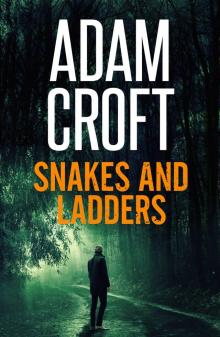 Snakes and Ladders
Snakes and Ladders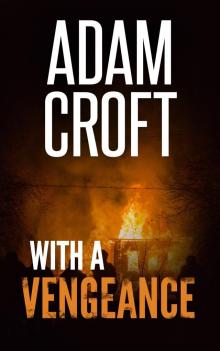 With A Vengeance
With A Vengeance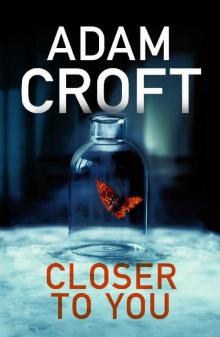 Closer to You
Closer to You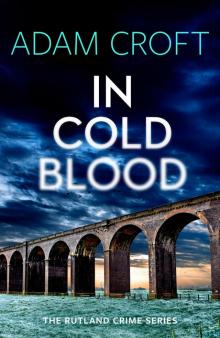 In Cold Blood
In Cold Blood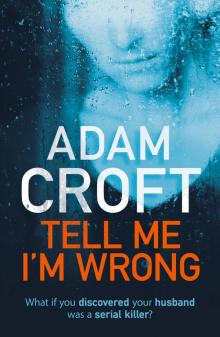 Tell Me I'm Wrong
Tell Me I'm Wrong![[Knight and Culverhouse 09] - In Plain Sight Read online](http://i1.bookreadfree.com/i/03/16/knight_and_culverhouse_09_-_in_plain_sight_preview.jpg) [Knight and Culverhouse 09] - In Plain Sight
[Knight and Culverhouse 09] - In Plain Sight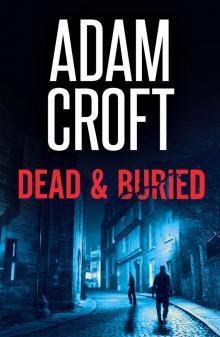 Dead & Buried
Dead & Buried Too Close For Comfort
Too Close For Comfort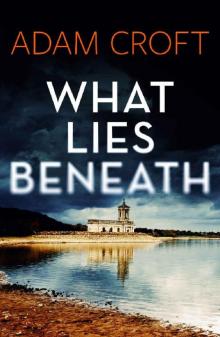 What Lies Beneath (Rutland crime series Book 1)
What Lies Beneath (Rutland crime series Book 1) In Too Deep (Knight & Culverhouse Book 5)
In Too Deep (Knight & Culverhouse Book 5) Gone
Gone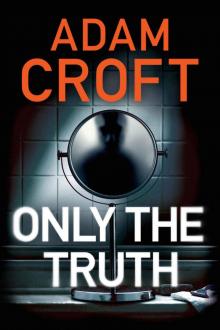 Only the Truth
Only the Truth Kempston Hardwick Mysteries — Box Set, Books 1-3
Kempston Hardwick Mysteries — Box Set, Books 1-3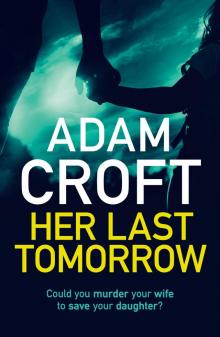 Her Last Tomorrow
Her Last Tomorrow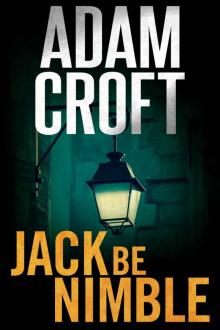 Jack Be Nimble (Knight & Culverhouse Book 3)
Jack Be Nimble (Knight & Culverhouse Book 3)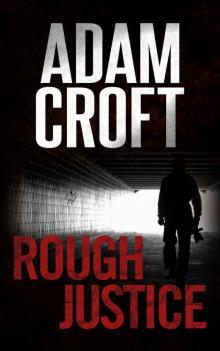 Rough Justice (Knight & Culverhouse Book 4)
Rough Justice (Knight & Culverhouse Book 4)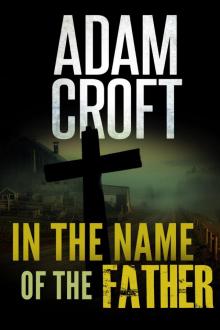 In the Name of the Father
In the Name of the Father In Her Image
In Her Image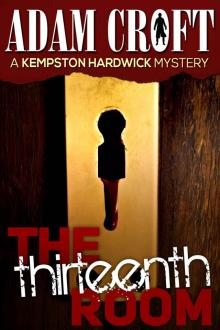 The Thirteenth Room (Kempston Hardwick Mysteries Book 4)
The Thirteenth Room (Kempston Hardwick Mysteries Book 4)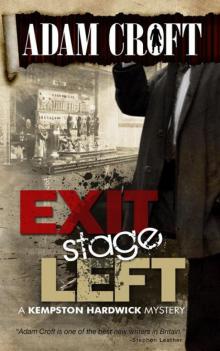 Exit Stage Left (Kempston Hardwick Mysteries Book 1)
Exit Stage Left (Kempston Hardwick Mysteries Book 1)